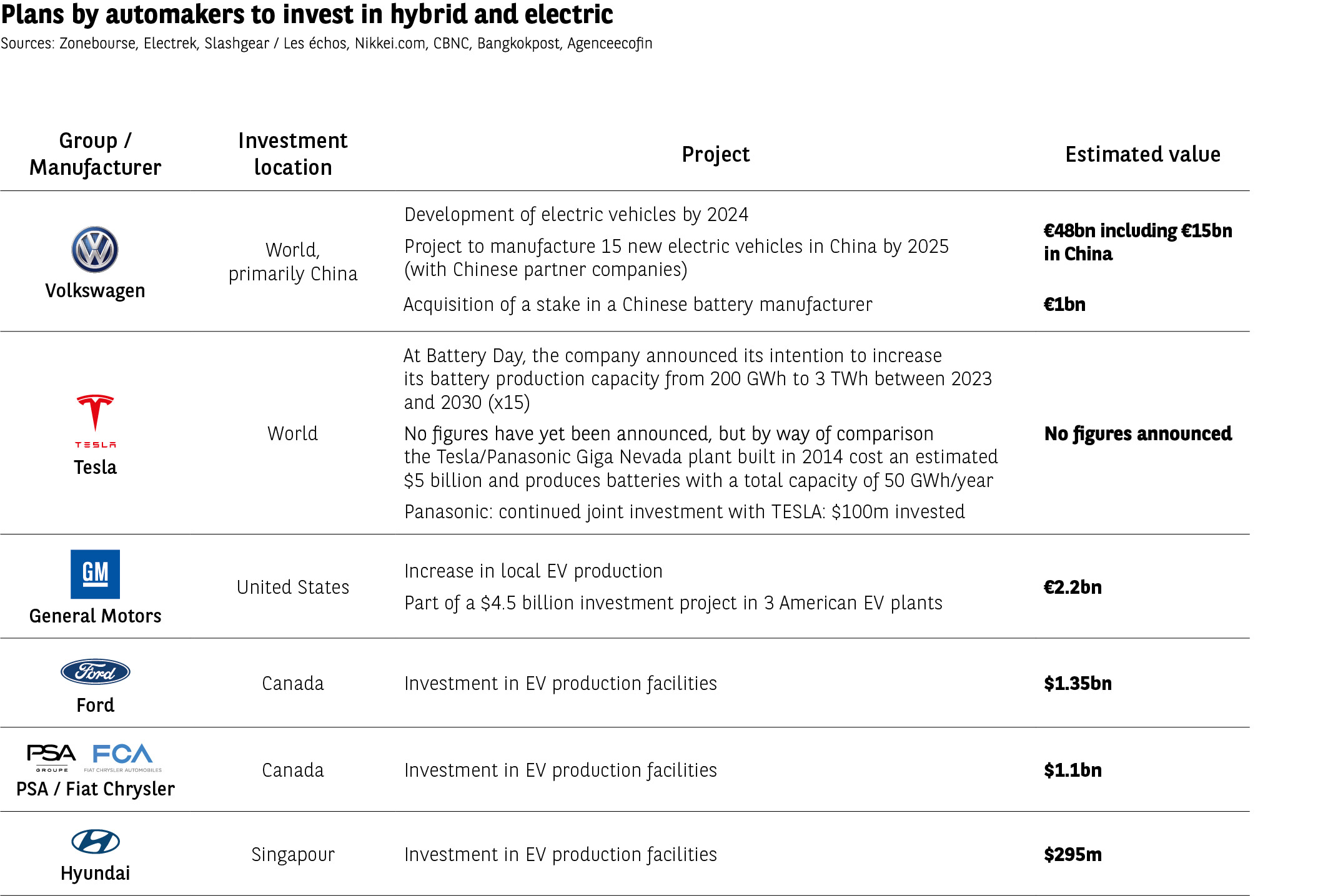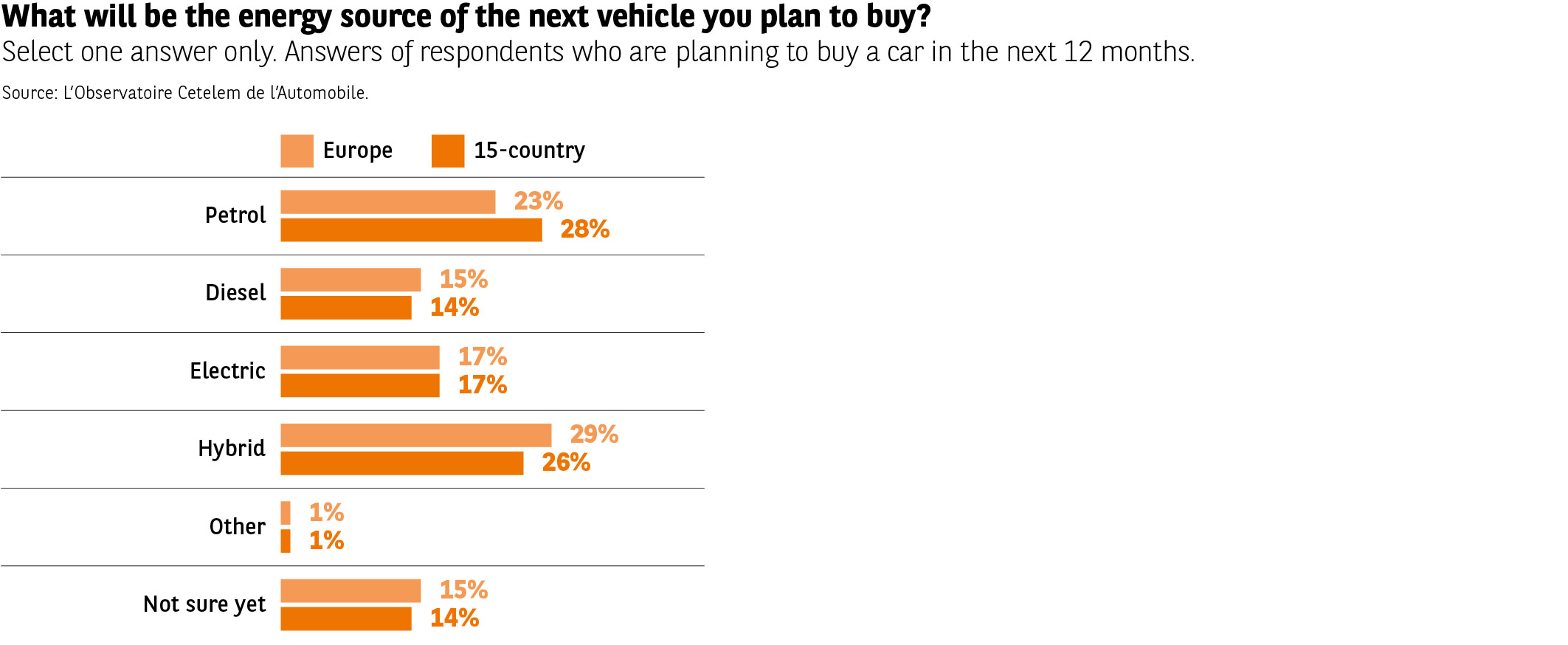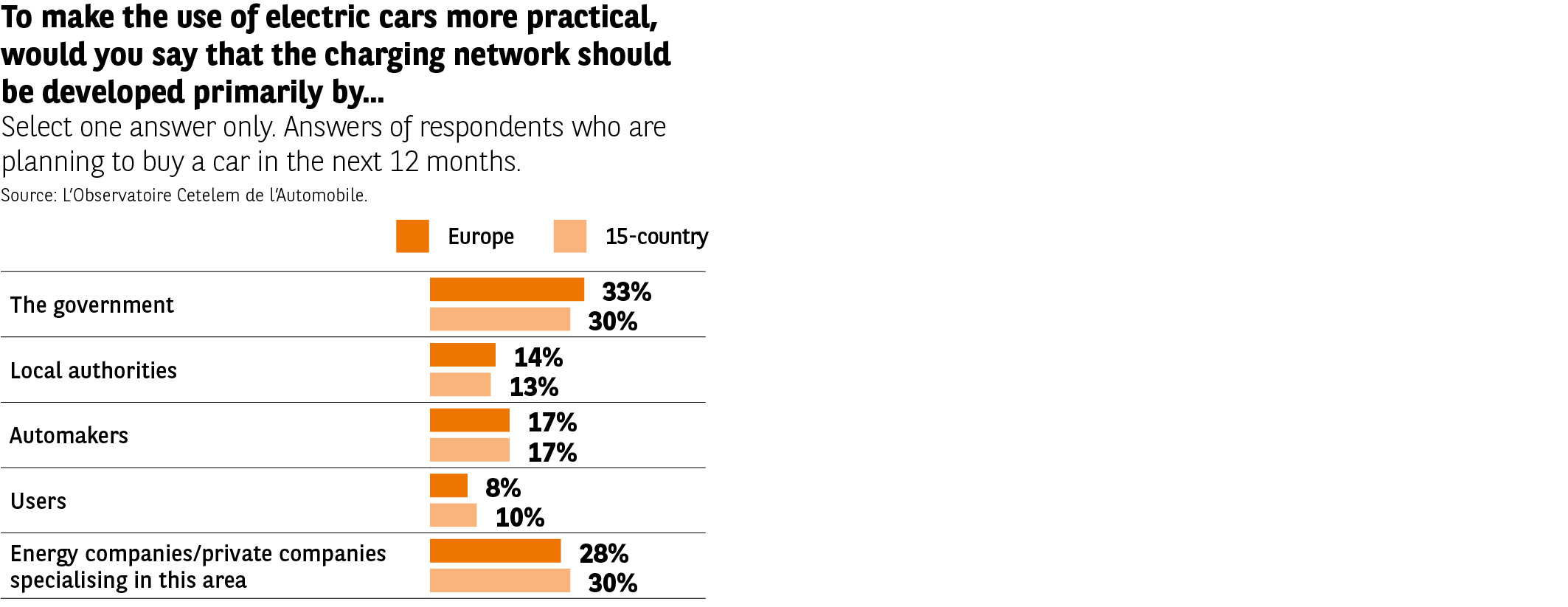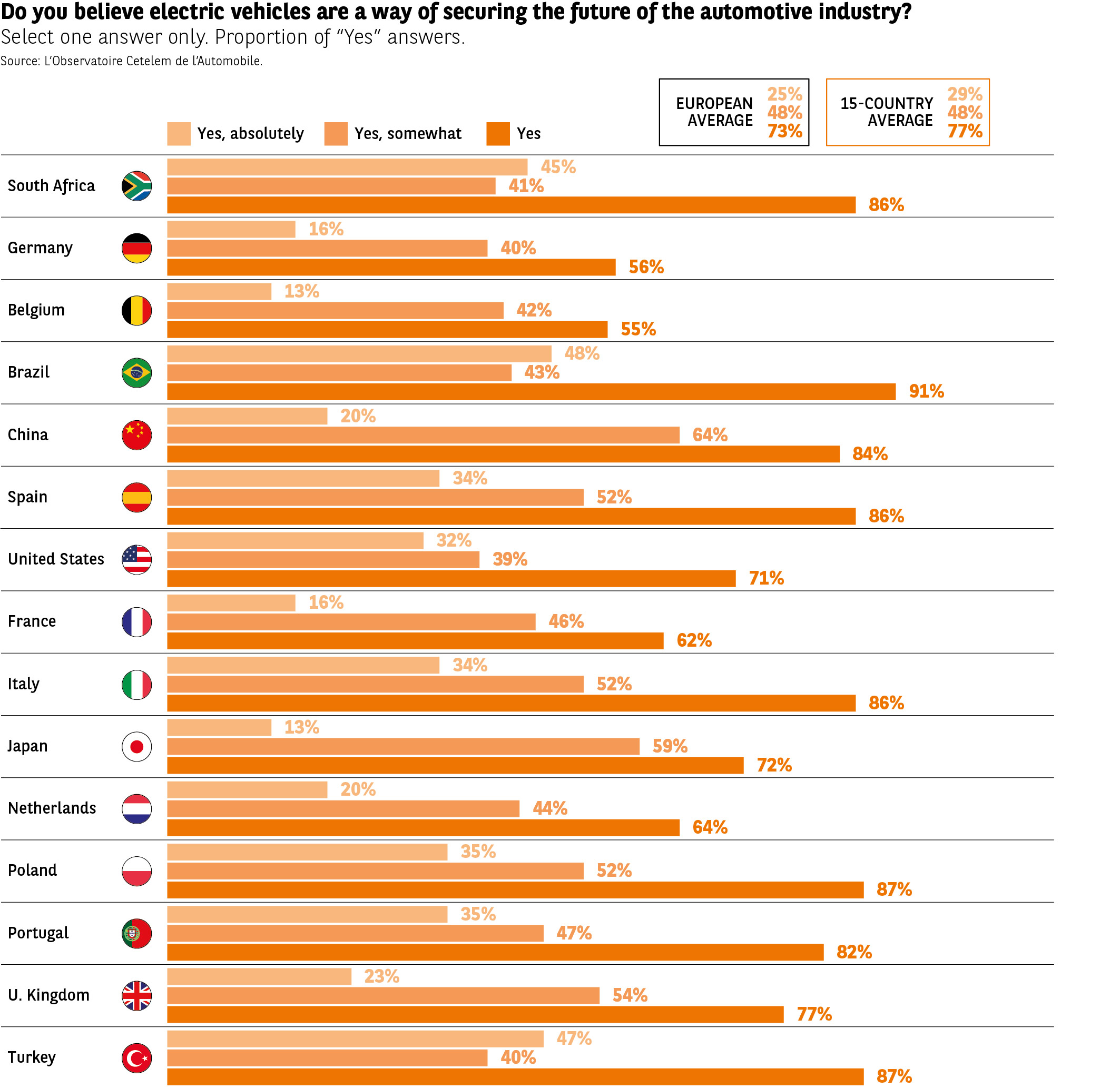A more virtuous future


1 in 2 are ready to buy a hybrid or electric vehicle
In order to bounce back and enjoy a long and fruitful relationship with motorists, the automotive sector must have no hesitation in going green. Almost half of those surveyed say that their next car will be hybrid or electric (Fig. 44). The Spanish are by far the most enthusiastic about the former, with 42% considering buying such a vehicle. The Chinese and British are the keenest to switch to electric (27% and 28%). The Dutch and South Africans are the most likely to prefer petrol (43% and 44%). The Turks are almost alone in supporting diesel in significant numbers (28%).
A close analysis reveals significant differences between the income groups (Fig. 45). The intentions of the wealthiest individuals are more “eco-compatible” than those on low or middle incomes. Petrol is still the preferred choice of the latter two categories. The higher cost of electric and hybrid vehicles is therefore still a major obstacle.
Electric and plug-in hybrid: higher and higher
In 2019, sales of electric and plug-in hybrid vehicles began to reach significant levels: 15% in the Netherlands, more than 5% in China and Portugal, and more than 3% in France, Germany, Belgium and the United Kingdom. Encouragingly, these results follow a pattern that has seen sales of such models rise exponentially.
Fig. 46 / Context:
Download this infographic for your presentations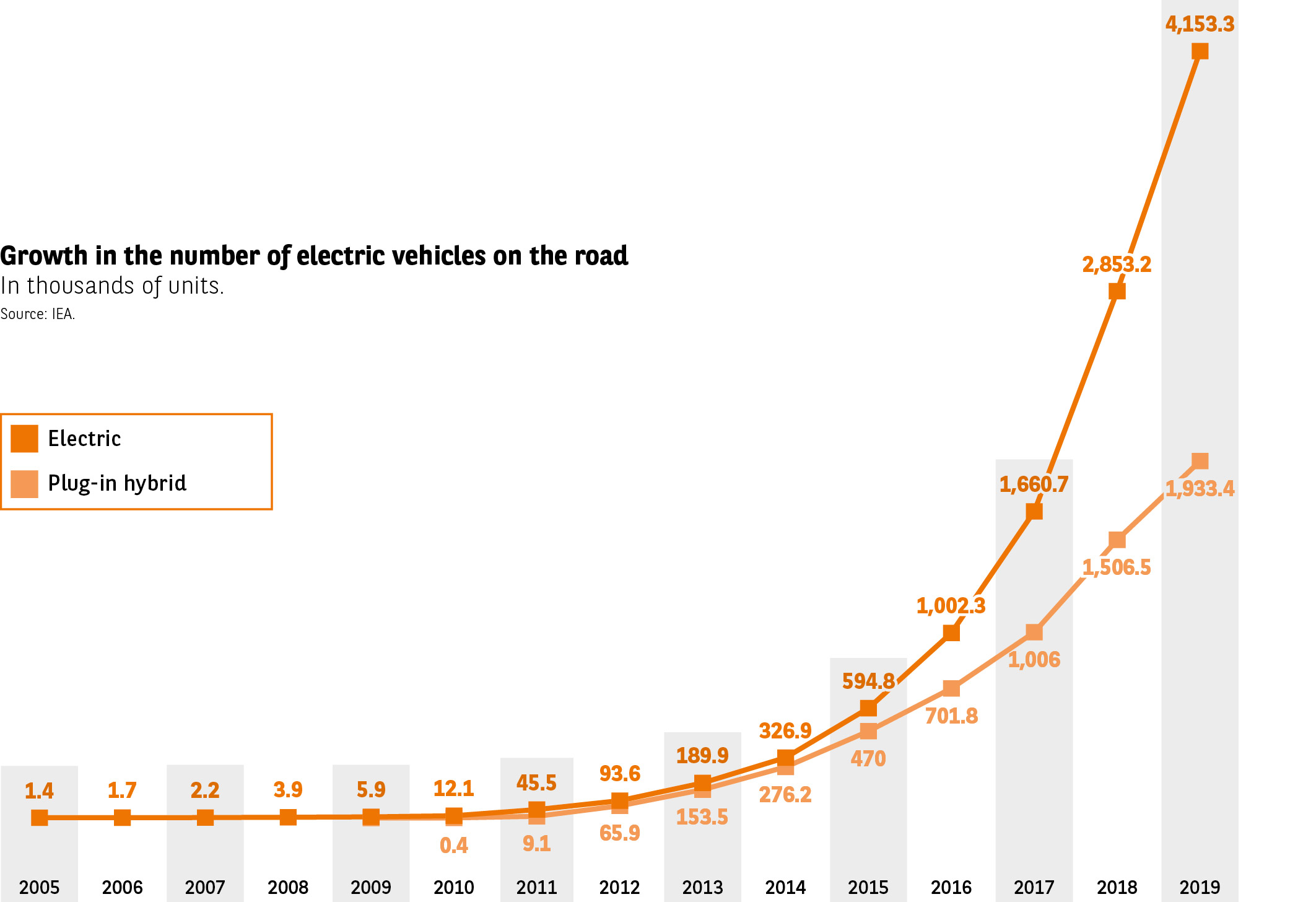
Electric cars: the answer to environmental problems
If we focus on fully-electric cars alone, the majority of people view them as an ideal solution with which to combat a wide range of environmental problems. The issues cited in particular are noise pollution, air pollution and climate change (82, 85%, 79%) (Fig. 47).
Carbon footprint: electricity wins out
The debate around the carbon footprint of electric cars rumbles on, with critics pointing out, among other issues, that the treatment of battery waste and the depletion of the natural resources needed to manufacture cells are both problematic. Nonetheless, their environmental impact is still smaller than that of comparable diesel or petrol vehicles.
Fig. 48 / Context:
Download this infographic for your presentations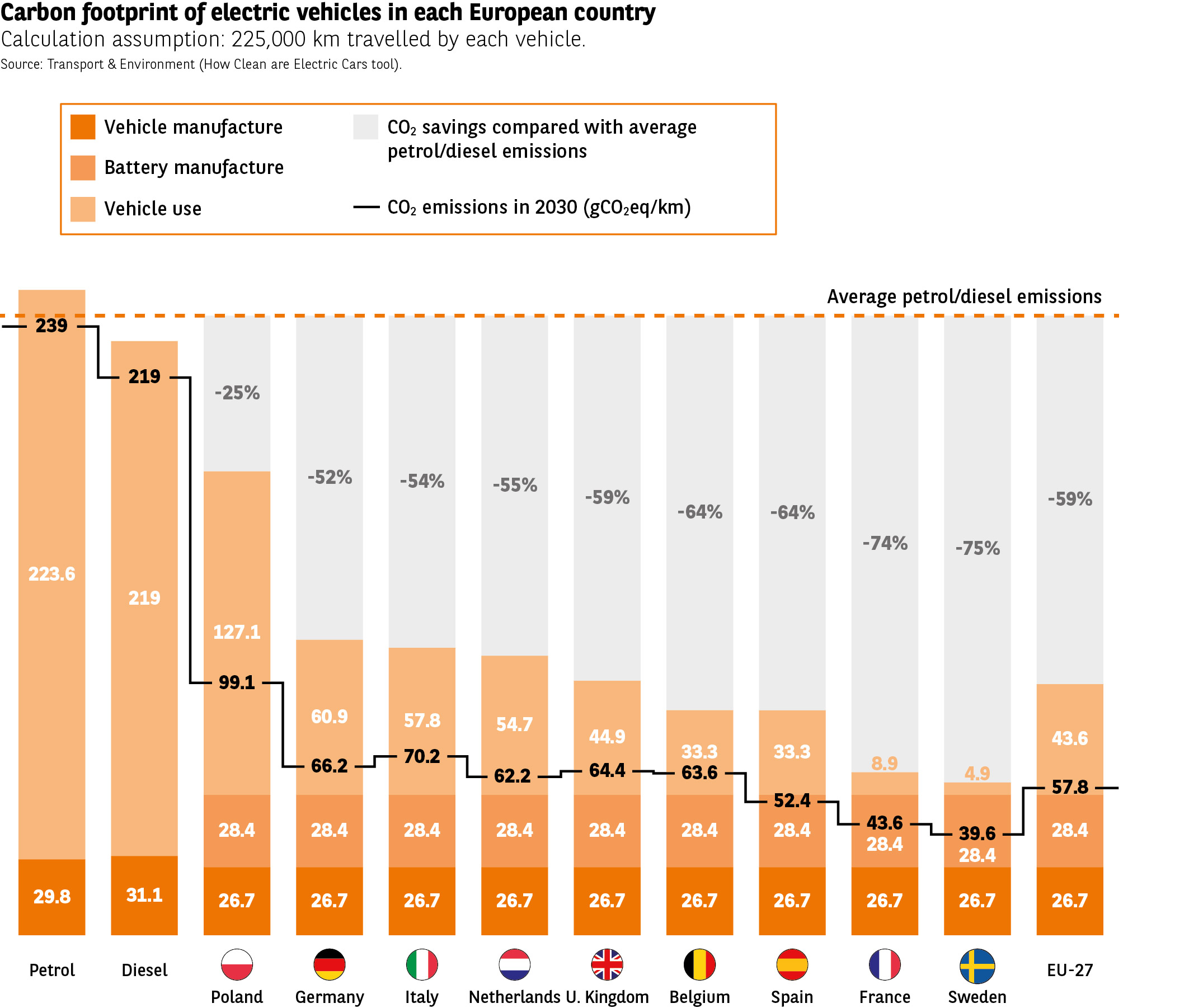
An expectation that governments and energy industries will take us to the next level
As we have seen, people are looking to governments to support the automotive industry, but not at any price. The same goes for expanding the network of charging stations, which is currently an Achilles heel for the development of this technology, together with the cost and range of vehicles. 1 in 3 people believe it is up to the authorities to drive this growth (Fig. 49). However, various other stakeholders are also expected to help pick up the reins. Almost the same proportion believe that companies from the energy sector must contribute. The rationale may be that these firms should start giving back what they have taken from the planet to help ensure a more sustainable future.
Those in more “economically liberal” countries, like the United States and Brazil, tend to expect less from governments in this area, although the UK swims against this tide. There is a broader consensus regarding the efforts expected from energy companies, with Brazil and South Africa leading these demands.
Fig. 50 / Context:
Download this infographic for your presentations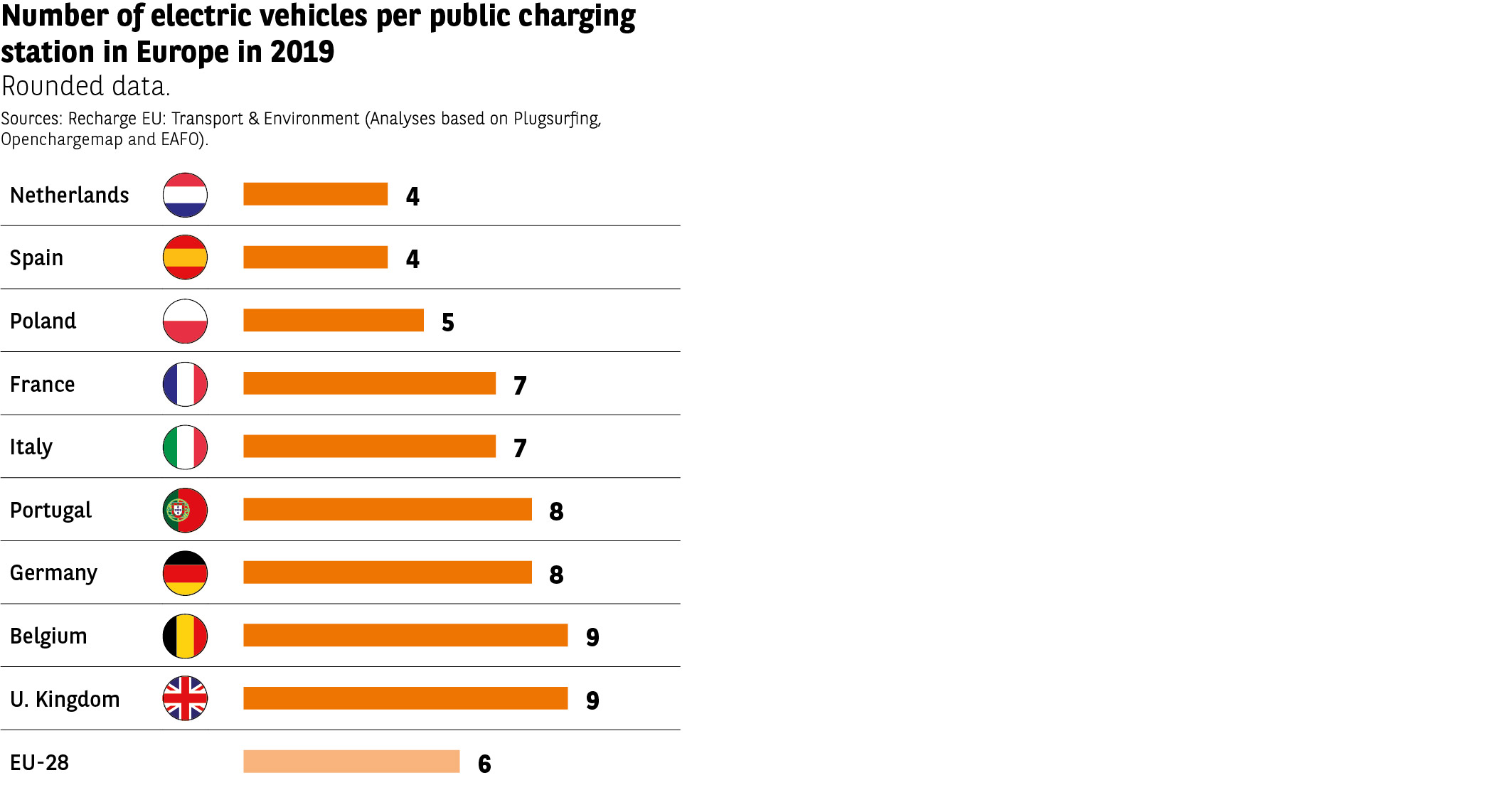
Electric: the future of motoring
A final leap forward was apparently needed for electric cars to be considered the auto industry’s guiding light towards a bright future. Today, this leap has resolutely been made. 3 in 4 state that these vehicles will secure the sector’s future (Fig. 51). Electric power is largely viewed as the only magic wand available. On this question, which is fundamentally tied to government environmental policies, we find the same difference of opinion already observed in many areas. Indeed, while the emerging countries and China passionately believe in the idea, France, Germany and Belgium are a little less convinced.
Manufacturers are plugging in to electricity
People’s faith in the ability of electric cars to save the automotive industry is also measured in terms of hard cash and the strategic commitment required from manufacturers across the globe.
Countless new models are set to hit the market over the coming months and years.
And given the levels of investment announced, this is surely just the beginning.
Fig. 52 / Context:
Download this infographic for your presentations